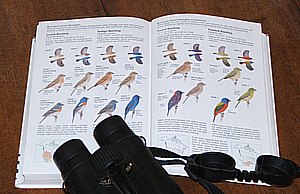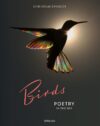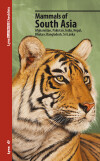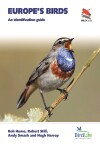 It’s a question I expect from anyone who finds out I’m a birder – “So, how’d you get into that?” (Never mind that my other interests, such as home theater and baseball, never elicit that response). But I’m never sure how to answer because it isn’t simple, and it is definitely not ordinary. I know some birders who can trace their start back to the site of a single bird, such as an American Redstart (I can see how that would do it!). But for me it wasn’t a bird, but rather a bird book. The Sibley Guide to Birds turned me into a birder. However, it didn’t start there.
It’s a question I expect from anyone who finds out I’m a birder – “So, how’d you get into that?” (Never mind that my other interests, such as home theater and baseball, never elicit that response). But I’m never sure how to answer because it isn’t simple, and it is definitely not ordinary. I know some birders who can trace their start back to the site of a single bird, such as an American Redstart (I can see how that would do it!). But for me it wasn’t a bird, but rather a bird book. The Sibley Guide to Birds turned me into a birder. However, it didn’t start there.
I’ve been interested in nature for as long as I can remember. Like most boys growing up before the explosion of video games, my brother and I would explore our yard looking for snakes, lizards, salamanders, etc. But birds were always my favorite. My dad tells of one time that I was looking out into the yard and mortified him by exclaiming, “Look at all the tits!” I can only assume that I was looking at Tufted Titmice, and possibly some Carolina Chickadees, because I don’t have any recollection of this. But I do recall other birds seen while gazing out the windows. There was a surprise appearance of a Wood Thrush (definitely not the usual Brown Thrashers) underneath the huge poplar in front of the house, Chipping Sparrows gathering up nesting material of fine hair right underneath the window, and of course all the birds on the feeders out back. Of these latter ones, two were especially memorable. Over the summer, Blue Grosbeaks and Indigo Buntings occasionally blessed us with their presence. Mom, who kept the feeders full, would always let me know when one of these made an appearance. These two birds now come to the feeders at my home, and I deeply wish that I could return the favor and share them with her.
I could work out the identification of these birds, but others were beyond me. I distinctly remember standing outside with one of my first teachers, who encouraged my interest in nature, when he confidently proclaimed that a Red-shouldered Hawk was overhead. I could see no hawk through the trees, and even if I had I would not have known it by name. I don’t recall the strident “kyer kyer kyer” that likely first alerted him to its presence. The concept that someone could identify such a bird in flight, either by sight or especially by sound, seemed magical and utterly unattainable.
As a kid I never went anywhere specifically for birds, but I paid attention wherever I did go. On a family vacation to St. Augustine, Florida, I was more interested in the birds than the reptiles at the Alligator Farm. I saw a white pelican there that excited me, since there was only one – the Brown Pelican – on the checklist given to us. I have to assume now that it was an American White Pelican, which would not have been too abnormal. But this was definitely an indication of how I’d feel about vagrants later!
Like most childhood pursuits, however, I abandoned my nascent birding tendencies. I don’t remember exactly when, I just no longer gave it much thought. That is, until the July of 2003. I had a friend who worked at a bookstore that was closing, and he was able to give his friends some incredible deals. I made multiple trips there and bought any book in which I had the slightest interest. As I browsed through the various sections, I came across the nature books. I figured that I should get a newer and better field guide to replace the old Golden and Audubon Guides that I used growing up. But I didn’t know which one to get, and if I was going to get one, I wanted the best. I was already using Amazon.com to help figure out what books I wanted, so I checked out the field guide user reviews as well. It soon became apparent that Sibley’s was the one to get. A quick glance through it confirmed that it looked much better and more usable than the guides I had used as a child.
I wish I could remember what my thought process actually was; all I can say is that something must have clicked within me, because I didn’t stop with the field guide. I also got a few art books such as Robert Bateman’s Birds in addition to the other Sibley books, The Sibley Guide to Bird Life & Behavior
and Sibley’s Birding Basics
. I don’t know if I had yet made a conscious decision to go looking explicitly for birds, but I also grabbed the birdfinding guide Birding Georgia
, just in case. After the buying frenzy was over, I came away with a very good nucleus of a birding library. More importantly, somewhere along the way I became a birder.
It may be a bit disingenuous to say that The Sibley Guide made me into that birder. The seed was already there, planted and nurtured long ago by family and friends. Just as some plant seeds require fire to germinate, it just needed the spark provided by getting this book. And it, along with the size of my library, hasn’t stopped growing!
Posted by Grant McCreary on March 12th, 2008.








I don’t know if the Sibley’s was what started me out as a birder, but it definitely accelerated me down the path. While I have other field guides and other books, the Western Edition Sibley’s is still the field guide I carry.
[…] I ever stood a chance. My predisposition to collect, life-long love of reading, and the fact that a bird book got me into birding all conspired to make me a bird book lover. I’m glad that I’m not the only […]
Wonderful post, Grant. I see myself in a lot of your story too.
Thanks!